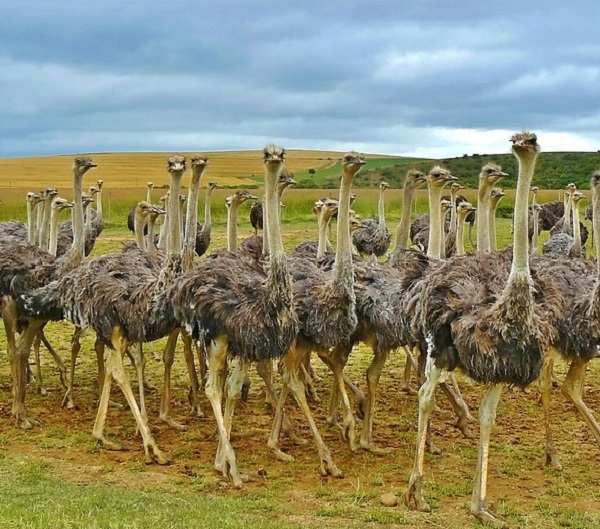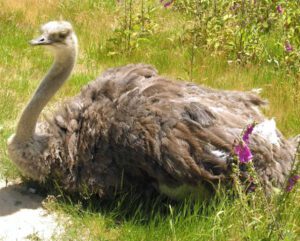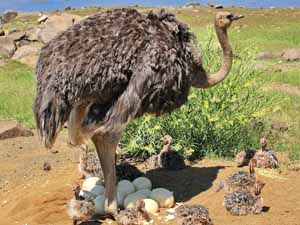Ostrich farming is the practice of breeding and raising ostriches for commercial purposes. Ostriches are large flightless birds that are native to Africa, but they are now raised in many parts of the world for their meat, eggs, feathers, and leather.
Ostriches are the largest birds in the world and can grow up to 9 feet tall and weigh up to 350 pounds. They are also known for their distinctive appearance, with long necks, powerful legs, and a distinctive plumage of black and white feathers.
Ostrich farming involves raising the birds in captivity, usually in large outdoor enclosures or indoor facilities. The birds require a lot of space to move around, and the enclosures must be strong and secure to protect them from predators and other hazards.
The primary product of ostrich farming is meat, which is a lean and healthy protein source that is gaining popularity among health-conscious consumers. Ostrich meat is also very versatile and can be used in a variety of dishes, from burgers and sausages to steaks and stir-fries.
Another product of ostrich farming is eggs, which are much larger than chicken eggs and have a distinctive flavor and texture. Ostrich eggs are often sold as a novelty item and are popular in upscale restaurants and gourmet markets.
In addition to meat and eggs, ostrich farming also produces feathers and leather. Ostrich feathers are prized for their softness and durability and are used in a variety of decorative and fashion applications. Ostrich leather is also highly valued for its strength and suppleness and is used in luxury goods such as handbags and boots.

How to Start Ostrich Farming Business?
Starting commercial ostrich farming business is not too easy. It requires knowledge, and high investment as compared to other poultry farming business.
So, we recommend having practical knowledge or training before starting this business commercially. Try to complete a training from an existing farmer, or from any govt or non-govt institution.

Here we are trying to describe more information about starting and operating a successful ostrich farming business from purchasing birds to caring and marketing.
Step 1. Complete Training
Completing an ostrich farming training will help you to run your farm better. So, if you have the facility, try to complete the training before starting the business.
Step 2. Select a Good Location
Selecting a good location for ostrich farming is very important for the successful business. Try to select a location with a dry and warm climate, ample land availability, accessibility, proximity to services, availability of water, and favorable zoning regulations.
Step 3. Select Right Breed
When choosing an ostrich breed for farming, it is important to consider some factors such as the bird’s size, temperament, growth rate, and adaptability to your local environment. You can consult with an expert in your area if you are beginner. Some popular ostrich breeds are:
- Black-necked ostrich
- Blue-necked ostrich
- Red-necked ostrich
- Somali ostrich and
- Masai ostrich
Step 4. Housing
Proper housing is essential for the health and wellbeing of ostriches. It is very important to consider some factors such as space requirements, fencing, bedding, ventilation, lighting, and feeding and watering during building the house.
Step 5. Fencing
Ostriches require appropriate fencing to keep them safely contained and prevent them from wandering off or being preyed upon by predators. A fence height of at least 7-8 feet is recommended to prevent ostriches from jumping over it. Some farmers even use fences that are 10-12 feet tall to ensure maximum safety and security.

Step 6. Feeding
Providing the birds with very good quality, nutritious and balanced diet is very important. Because, proper nutrition is essential to ensure the health and productivity of ostriches. Ostriches require a diet that is high in protein and low in fat. A good quality ostrich feed should contain at least 18-20% protein.
And along with providing the birds with nutritious food, always try to provide them with enough clean and fresh drinking water as per their demand.
Step 7. Breeding
Depending upon the variety, most of the ostriches reach maturity at around 2-3 years of age. You can start breeding once the birds reach this age. Like pigeons, ostriches are typically bred in pairs, with one male and one female. After successful mating, a female ostrich generally lay 20-40 eggs. And the eggs generally require between 42 and 46 days for hatching

Step 8. Caring
Taking good care of the birds is very important for better growth and also for staying healthy. Ostrich caring tasks include providing them a good housing system, feeding them good quality food and monitoring their health on a regular basis.
9. Marketing
Marketing ostrich products is not that easy. It requires a combination of strategies to effectively promote these unique products. Determine your marketing strategies before starting this business.

Ostrich farming is a unique but profitable business that offers a range of products and opportunities. Hope this guide has helped you! Good luck and may God bless you!





What is the best site for market prices/purchasing/selling ostriches in the USA?